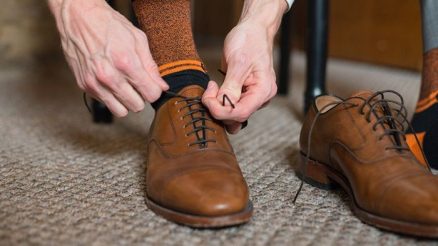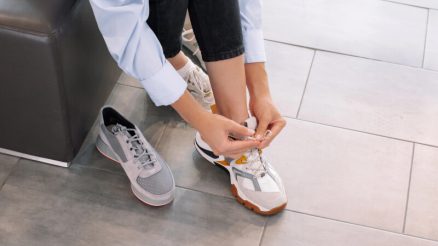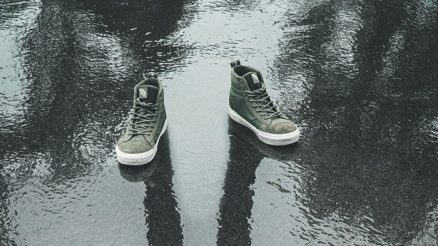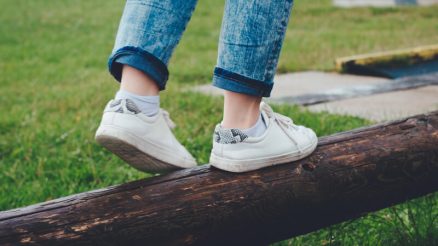Finding the perfect pair of shoes is about more than just style and comfort—it’s also about fit. Wearing shoes that are too big can lead to discomfort, blisters, and even long-term foot problems. Unfortunately, many people struggle to determine whether their shoes fit properly, especially when shopping online or trying on shoes quickly in-store. In this article, we’ll explore the key signs that your shoes are too big, how to measure your feet accurately, and tips for ensuring a proper fit.
Why Wearing Shoes That Are Too Big Is a Problem
Before diving into how to identify oversized shoes, it’s important to understand why wearing shoes that are too big can be problematic:
- Blisters and Calluses: Excess space allows your feet to slide around, creating friction that can lead to painful blisters and calluses.
- Foot Pain and Fatigue: Shoes that are too big don’t provide adequate support, which can strain your feet, ankles, and even your legs.
- Tripping Hazards: Loose shoes can cause you to trip or lose your balance, increasing the risk of injury.
- Poor Posture: Ill-fitting shoes can alter your gait, leading to posture issues and discomfort in your knees, hips, and back.
Signs Your Shoes Are Too Big
Here are the most common indicators that your shoes are too big:
- Your Heel Slips Out When Walking
If your heel lifts out of the shoe with each step, the shoes are likely too big. A properly fitting shoe should hold your heel securely in place. - Your Toes Don’t Reach the Front
When standing, your toes should be close to the front of the shoe without touching it. If there’s a significant gap (more than a thumb’s width) between your longest toe and the shoe’s tip, the shoes are too big. - Your Feet Slide Forward
If your feet slide forward when walking, causing your toes to hit the front of the shoe, this is a sign that the shoes are too long or too wide. - You Need to Tighten the Laces Excessively
If you find yourself pulling the laces extremely tight to keep the shoes on, they’re probably too big. Properly fitting shoes should feel snug without excessive tightening. - The Shoes Feel Loose Around the Sides
If your feet move side-to-side within the shoes, they’re too wide. Shoes should hug your feet comfortably without pinching. - You Experience Blisters on Your Heels or Toes
Blisters are often caused by friction, which occurs when shoes are too big and your feet slide around. - The Shoes Look Disproportionate
If the shoes appear overly large on your feet or extend far beyond your toes, they’re likely too big.
How to Measure Your Feet for the Right Fit
To avoid buying shoes that are too big, it’s essential to measure your feet accurately. Here’s how:
- Measure at the End of the Day
Feet tend to swell throughout the day, so measuring in the evening ensures you get the most accurate size. - Use a Brannock Device or a Ruler
Stand on a Brannock device (available in most shoe stores) or a piece of paper with a ruler. Measure the length from your heel to your longest toe and the width at the widest part of your foot. - Check Both Feet
It’s common for one foot to be slightly larger than the other. Always size your shoes to fit the larger foot. - Refer to Size Charts
Shoe sizes can vary by brand and style, so consult the brand’s size chart before purchasing.
Tips for Ensuring a Proper Fit
- Try Shoes On with the Right Socks
Wear the type of socks you plan to pair with the shoes when trying them on. Thick socks can make shoes feel tighter, while thin socks may leave extra space. - Walk Around the Store
Don’t just stand in the shoes—walk around to see how they feel. Pay attention to any slipping or discomfort. - Check the Toe Box
Ensure there’s enough room in the toe box for your toes to wiggle slightly. However, there shouldn’t be so much space that your feet slide forward. - Consider the Shoe Type
Different types of shoes fit differently. For example, running shoes often require a bit of extra space to accommodate foot movement, while dress shoes should fit more snugly. - Use Insoles or Inserts
If your shoes are slightly too big, adding insoles or heel grips can help fill the extra space and improve the fit. - Shop in Person When Possible
While online shopping is convenient, trying shoes on in-store allows you to assess the fit more accurately.
What to Do If Your Shoes Are Too Big
If you’ve already purchased shoes that are too big, don’t worry—there are ways to make them work:
- Add Insoles or Cushions
Insoles can take up extra space and provide additional support. Heel grips or toe pads can also help secure your feet. - Wear Thicker Socks
Thicker socks can fill some of the extra space and prevent your feet from sliding around. - Tighten the Laces
Adjust the laces to create a snugger fit. For shoes without laces, consider using adhesive straps or inserts. - Visit a Cobbler
A professional cobbler can make adjustments to improve the fit, such as adding padding or altering the shoe’s structure.
Conclusion
Wearing shoes that are too big can lead to discomfort and foot problems, but with the right knowledge, you can easily identify and avoid this issue. By paying attention to the signs of an improper fit, measuring your feet accurately, and trying shoes on carefully, you can ensure that your footwear is both stylish and comfortable. Remember, a well-fitting shoe is an investment in your foot health and overall well-being.








